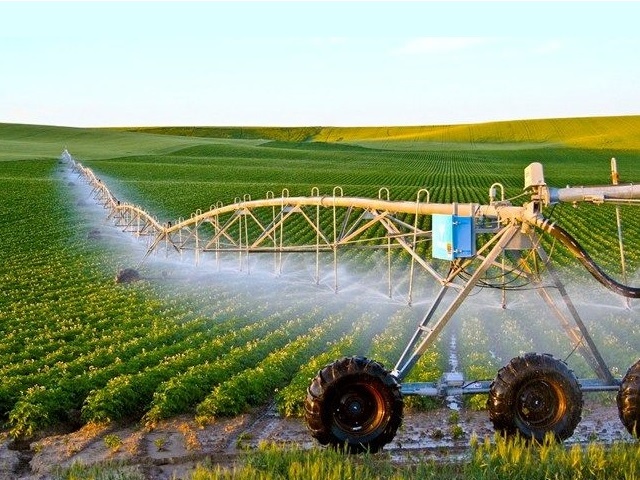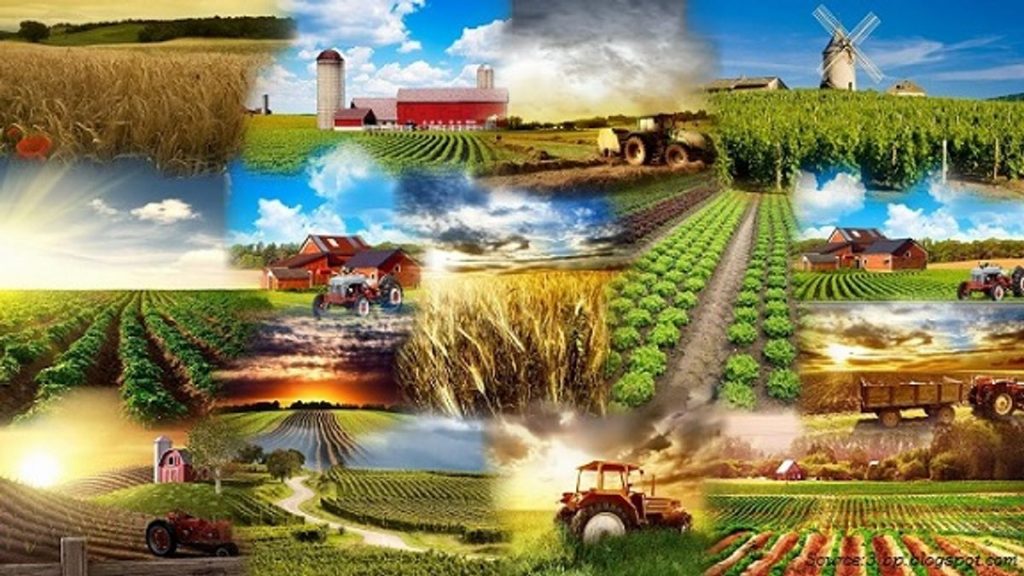
Effects Of Modern Farming On Environment Project
WHAT IS CONTEMPORARY AGRICULTURE?
Modern farming is the practise of utilising cutting-edge methods, equipment, and technology to boost the output of agricultural endeavours. Precision farming, intensive agricultural methods, and the use of genetically modified crops are characteristics of modern farming. In order to increase agricultural yields, it entails the use of big machinery like tractors and harvesters as well as the use of chemicals, fertilizers, and pesticides.
Utilizing specialised machinery and instruments to keep an eye on plant growth rates, soil moisture levels, and nutrient concentrations is another aspect of modern farming. This information is used by farmers to maximise agricultural production and reduce waste. In addition to using irrigation systems, modern farming techniques allow farmers to cultivate crops in desert and low-rainfall locations.
In general, contemporary farming uses scientific research and technical improvements to boost agricultural activities’ productivity and efficiency. Modern farming techniques have increased food production and enhanced food security, but they have also had a number of negative environmental repercussions.

IMPACT OF MODERN AGRICULTURE ON THE ENVIRONMENT

The environment has been significantly impacted by modern agriculture, especially in terms of the quality of the soil, water, and air. The following are some of the main effects of modern agriculture on the environment:
Degradation of the soil: Chemical fertilisers and pesticides are used extensively in modern farming practices, which can cause the soil to deteriorate and lose its fertility. Overuse of chemical fertilisers can result in an imbalance of nutrients in the soil, which will eventually reduce its productivity.
Water pollution: Chemical pesticides and fertilizers used in agriculture can also contribute to water contamination. These substances have the potential to contaminate groundwater, rivers, and other bodies of water, endangering both human health and aquatic life.
Deforestation: Especially in tropical areas, the spread of modern agriculture has resulted in the destruction of large areas of forest land. Climate change, biodiversity loss, and soil erosion are all consequences of deforestation.
Air pollution: Using large machinery in contemporary farming methods might cause air pollution. Farming machinery contributes to climate change by releasing greenhouse gases like carbon dioxide into the environment.
Loss of biodiversity: Monoculture, or the cultivation of a single crop across a broad region, is a common emphasis of modern agricultural practises. As natural ecosystems are destroyed to make room for agricultural land, this may result in a loss of biodiversity.
In conclusion, modern agriculture has had a considerable negative impact on the environment, with both immediate and long-term effects.
ENVIRONMENTAL IMPACTS OF PESTICIDES AND HERBICIDES

Chemicals called pesticides and herbicides are employed in contemporary farming methods to manage weeds and pests. The ecosystem may be adversely affected by these pesticides even though they have been successful in raising crop yields. Following are some examples of how pesticides and herbicides affect the environment:
Water contamination: Pesticides and herbicides can contaminate surface and groundwater, which can contaminate drinking water supplies and aquatic habitats.
Degradation of the soil: By destroying beneficial microbes and lowering soil fertility, pesticides and herbicides can also degrade the quality of the soil.
Non-target species harm: Including useful insects, birds, and mammals, pesticides and herbicides can potentially kill non-target animals. These substances can damage ecosystems and food webs, which reduces biodiversity.
Resistance development: The emergence of resistant pests and weeds is a result of repeated usage of pesticides and herbicides. This might result in more people using chemicals, which would be bad for the environment.
hazards to human health: Cancer, reproductive issues, and neurological damage are just a few of the serious health hazards that exposure to pesticides and herbicides can bring about.
In conclusion, the use of pesticides and herbicides in contemporary farming practises has the potential to have considerable detrimental consequences on the environment, including dangers to human health, soil degradation, water contamination, harm to non-target species, and damage to non-target species. To lessen the harmful effects of these chemicals on the environment, farmers must employ sustainable and integrated pest management techniques.
WATER POLLUTION WITH MODERN AGRICULTURE
Water pollution can be caused by modern farming techniques in a number of ways. Here are a few ways that contemporary farming methods can cause water pollution:
Runoff from fields: When irrigation or precipitation leaks from fields, it can contaminate neighbouring bodies of water with pesticides, herbicides, and fertilisers.
Livestock waste: Large-scale dairy and poultry industries, as well as feedlots, can all produce animal faeces that can contaminate the water supply. A nearby water supply may get contaminated by the waste’s potential presence of nutrients, bacteria, and diseases.
Irrigation techniques: Ineffective irrigation techniques, like flood irrigation, can result in an excessive water application, which can cause waterlogging and the leaching of nutrients into the groundwater.
Depletion of aquifers: Excessive use of groundwater for irrigation can result in aquifer depletion, which can cause the land to sink and raise the possibility of water contamination.
Soil erosion: Modern farming techniques can cause soil erosion, which can raise the silt content of adjacent water sources. Sediment can damage aquatic habitats and lower the quality of water.
MODERN FARMING’S EFFECT ON AIR QUALITY
Particularly in terms of greenhouse gas emissions and air pollution, modern farming techniques can have a substantial impact on air quality. Modern farming techniques can have the following effects on air quality:
Emissions of greenhouse gases: Particularly carbon dioxide and methane, modern agricultural practises can increase emissions of greenhouse gases. Fuel is needed to run farming machinery like tractors and harvesters, which releases carbon dioxide into the environment. Additionally, raising livestock, especially sheep and cows, can increase methane emissions.
Dust and particulate matter: Agricultural activities like plowing, tilling, and harvesting can produce dust and particle matter, which can lower air quality and be hazardous to both human and animal health.
Chemical emissions: In modern farming methods, the use of pesticides, herbicides, and fertilisers can emit volatile organic compounds (VOCs) into the atmosphere, which can worsen air pollution.
Crop burning: In some areas, burning crop leftover is still a common practice, which can result in significant smoke and particulate matter emissions into the atmosphere.
Odors: Modern farming techniques, particularly cattle farming, can also generate offensive odours that can negatively affect the local air quality and annoy residents in the area.
BIODIVERSITY AND CONTEMPORARY FARMING METHODS
The loss of species and alterations to ecosystems are two examples of how modern farming practises can have a large negative influence on biodiversity. Here are a few ways that contemporary farming methods may impact biodiversity:
Loss of habitat: Many modern farming practises entail clearing land for crop production, which causes the loss of many species’ natural habitats. This may cause the extinction or decline of species that depend on these environments.
Monoculture: Modern farming methods frequently feature monoculture, in which huge tracts of land are covered with a single crop species. As a result of removing the variety of plant and animal species that may be found in natural environments, this may result in a decrease in biodiversity.
Pesticides and herbicides: Pesticides and herbicides can harm non-target species, such as beneficial insects, birds, and mammals when used in modern farming practises. Loss of biodiversity may result from this disruption of food chains and ecosystems.
Genetic homogeneity: Reducing the genetic variety of crops through the extensive adoption of GM crops in contemporary farming techniques is known as genetic homogenization. Crop genetic resources that are crucial for adjusting to shifting environmental conditions may be lost as a result.
deterioration of the soil: Contemporary farming methods can also cause deterioration of the soil, which can have a detrimental effect on soil biodiversity. This may decrease the variety and quantity of microbes necessary for healthy soil and nutrient cycling.
CHANGES IN CLIMATE AND MODERN AGRICULTURE
Climate change is a factor that both modern farming methods can influence and contribute to. Following are a few ways that contemporary farming methods can both influence and be affected by climate change:
Emissions of greenhouse gases: Modern farming practices, especially industrial agriculture, can increase emissions of greenhouse gases by using fossil fuels and raising animals, which releases methane into the atmosphere. These emissions have an impact on global warming.
Soil carbon sequestration: However, through soil carbon sequestration, contemporary farming techniques can also contribute to reducing climate change. By increasing the amount of carbon retained in soils, techniques like cover crops and less tillage can reduce greenhouse gas emissions.
Crop productivity changes: Crop productivity can be impacted by climate change, particularly through variations in temperature and precipitation patterns. On both agricultural livelihoods and food security, this may have a considerable influence.
Water availability: A change in climate may affect how much water is available for agricultural. Crop production may suffer as a result of droughts or floods brought on by changes in precipitation patterns.
Pests and diseases: Changes in the distribution and intensity of pests and diseases that harm crops are also a result of climate change. This may result in more pesticides and herbicides being used, which can worsen air and water pollution.
BENEFITS OF SUSTAINABLE FARMING TECHNIQUES
Sustainable farming techniques aim to reduce environmental harm while preserving social responsibility and economic viability. Here are some examples of sustainable agricultural methods and their advantages:
Crop rotation: In a field, different crops are gradually planted over time. This can lessen the threat of pests and illnesses while preserving the health of the soil and preventing soil erosion. Additionally, it can decrease the requirement for synthetic fertilisers and boost soil carbon sequestration.
Integrated Pest Management (IPM): IPM is an approach to pest control that focuses on reducing the usage of pesticides and herbicides while still managing pests successfully. Monitoring pest populations, using predators found in nature, and only employing targeted treatments when necessary are all part of this strategy. This strategy can lessen the harm that pesticides and herbicides cause to the environment and unintended species.
Conservation Tillage: When planting and cultivating, conservation tillage seeks to cause the least amount of soil disturbance possible. This could support soil structure preservation, soil erosion control, and soil carbon sequestration. Additionally, it may lower fuel use and related greenhouse gas emissions.
Agroforestry: Agroforestry is the practise of growing crops and trees together on the same plot of land. This can boost biodiversity, offer habitat for wildlife, and enhance the condition of the soil. Additionally, it can open up new revenue streams from tree products including nuts, fruits, and timber.
Organic farming: Managing pests, illnesses, and fertilising crops naturally are all part of organic farming. This can improve the health of the soil and the crops while reducing the harmful effects of synthetic pesticides and fertilisers on the environment.

GOVERNMENT REGULATIONS AND MODERN FARMING POLICIES
Modern farming practises and their effects on the environment are significantly shaped by government laws and regulations. Here are some examples of laws and rules pertaining to contemporary farming:
Environmental regulation: Governments may create environmental restrictions to reduce the damaging effects of contemporary farming methods on the environment. Limits on agricultural runoff’s ability to pollute water, prohibitions on the use of pesticides and herbicides, and specifications for the removal of animal waste are a few examples of these regulations.
Agriculture subsidies: To promote contemporary farming methods, many governments provide subsidies. These incentives could be linked to actions that support sustainability, such conserving water, soil, and using fewer synthetic pesticides and fertilisers.
Land-use policies: To guarantee that farming is done in a sustainable way, governments may regulate land use. The use of genetically modified crops may be restricted by zoning laws, programmes to protect farmland, and laws governing farmland preservation.
Trade policies: Governments may also utilise trade rules to control how modern farming affects the environment. For instance, they can levy tariffs on imported products made using unethical farming methods or mandate that imported products adhere to specific environmental standards.
Farming incentives: Governments may offer incentives to farmers to encourage them to adopt sustainable farming practises. These incentives can consist of financing for the creation of renewable energy sources, research funding for environmentally friendly farming practices, or grants for the purchase of equipment that lowers greenhouse gas emissions.
CONCLUSION AND ADVICE FOR DEVELOPING FARMING TECHNIQUES
As a result, contemporary farming methods have had a considerable negative influence on the ecosystem, resulting in soil erosion, water pollution, and biodiversity loss. However, there are a lot of ecologically friendly farming methods and government regulations that can help to lessen these effects.
Prioritizing techniques that improve soil health, cut back on fertiliser and pesticide use, safeguard water quality, and encourage biodiversity is crucial for ensuring that farming methods in the future are sustainable. These procedures can lessen the detrimental effects on the environment while preserving the long-term production of farms.
In order to find new and inventive sustainable farming practices, governments and agricultural organisations should also continue to engage in research and development. In order to encourage farmers to embrace these practises and support their implementation, they should also sponsor outreach and education programmes.
We can make sure that contemporary farming methods are environmentally responsible and enhance long-term agricultural productivity by giving priority to sustainable farming practises and legislation. By doing this, we can safeguard the environment while ensuring that future generations have access to fertile agriculture.
Certificate of Completion
I, [Your Name], hereby certify that I have successfully completed the project titled “Effects of Modern Farming on the Environment. ” This project was undertaken as part of my academic curriculum, and I am pleased to present my findings and analysis on the impact of contemporary agricultural practices on our environment.
As a student passionate about sustainable agriculture and environmental conservation, this project allowed me to delve into the complexities of modern farming and its effects on various ecological aspects. I thoroughly researched contemporary agricultural methods, including precision farming, genetically modified crops, and the use of advanced machinery. Subsequently, I analyzed their impact on the environment, focusing on soil quality, water pollution, air quality, biodiversity, and climate change.
Throughout the project, I learned about the detrimental effects of chemical fertilizers and pesticides on soil degradation, water contamination, and non-target species. The widespread deforestation to expand agricultural lands and the resulting loss of biodiversity were particularly concerning. Additionally, the project revealed the role of modern farming in contributing to greenhouse gas emissions and climate change, highlighting the urgency of sustainable practices.
The project also delved into the advantages of sustainable farming techniques, such as crop rotation, integrated pest management (IPM), conservation tillage, agroforestry, and organic farming. I discovered how these practices can mitigate environmental harm, promote soil health, preserve water quality, and support biodiversity.
By conducting this research and compiling my findings, I gained a comprehensive understanding of the environmental impact of modern farming and the importance of implementing sustainable agricultural practices. It has inspired me to advocate for policies that support environmentally responsible farming methods and work towards a more sustainable future for agriculture.
I express my sincere gratitude to my academic mentor, [Mentor’s Name], for guiding me throughout this project and providing valuable insights. Additionally, I extend my appreciation to my educational institution for offering me the opportunity to explore this crucial subject and contribute to the growing body of knowledge in the field of agriculture and environmental science.
I hope that my project will serve as a valuable resource for those interested in understanding the implications of modern farming practices on the environment and how we can work towards a more sustainable agricultural future.
Sincerely,
[Your Name]Date: [Date of Completion][Institution/Department Name]In order to download the PDF, You must follow on Youtube. Once done, Click on Submit
Follow On YoutubeSubscribed? Click on Confirm
Download Effects Of Modern Farming On Environment Project PDF






